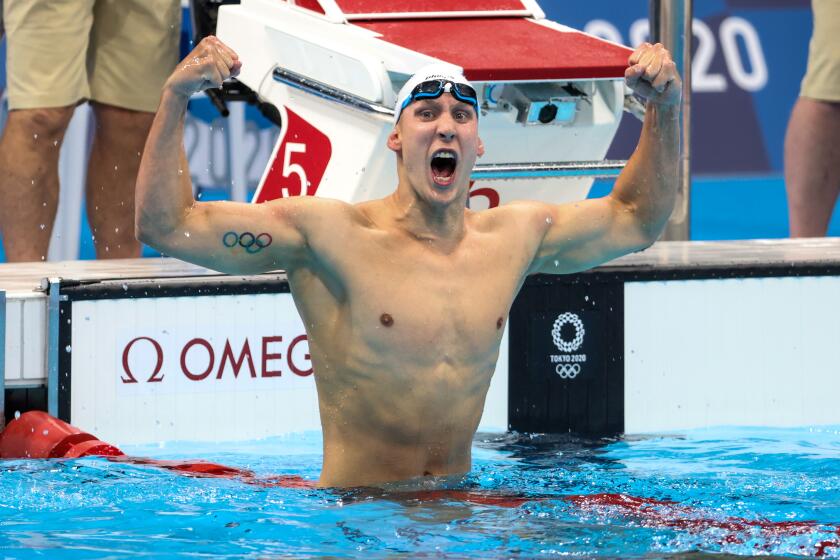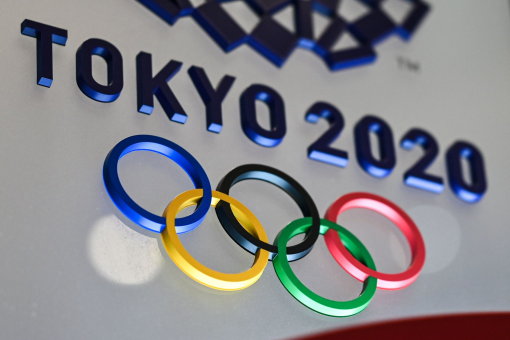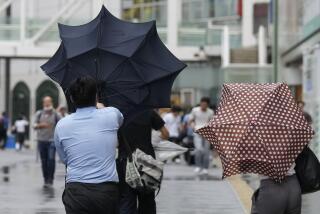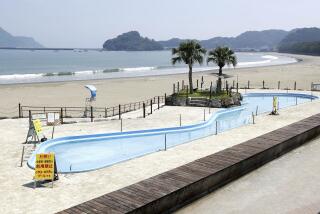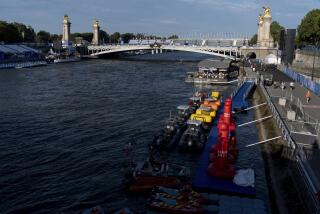Tokyo Olympic surfers feeling swell as tropical storm approaches Japan
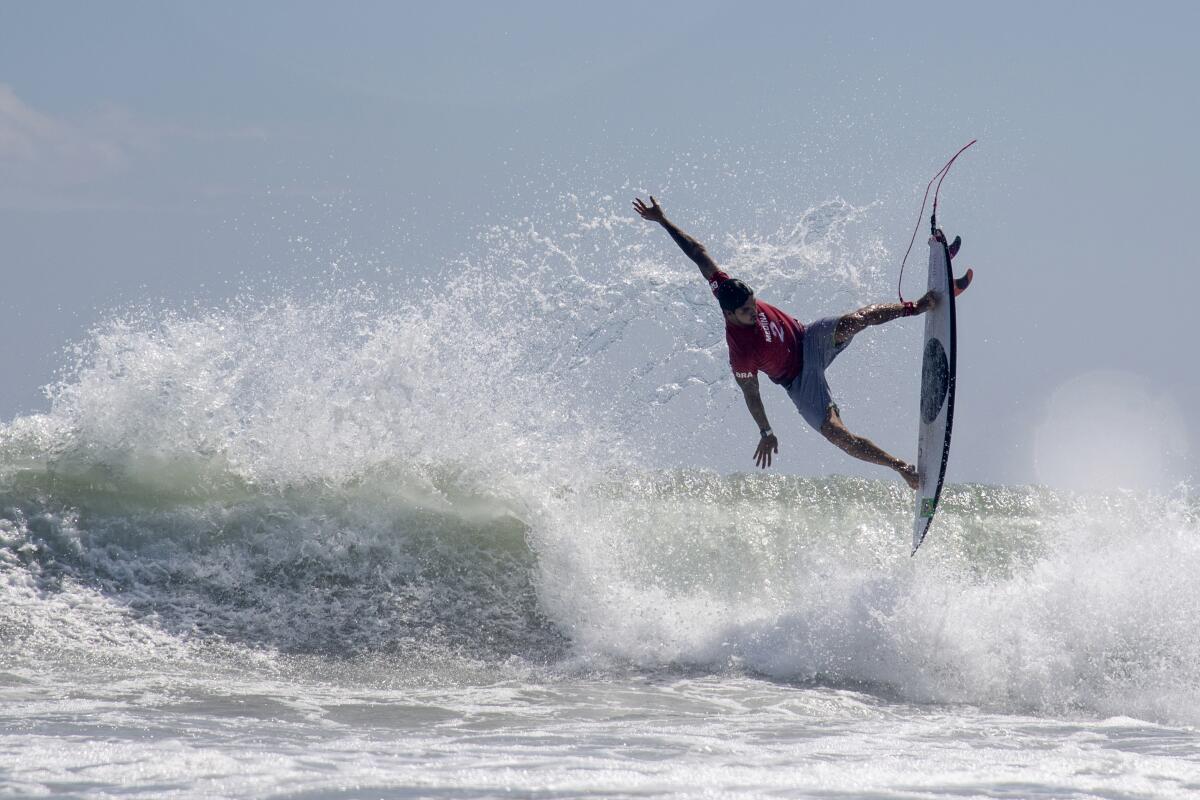
TOKYO — Tropical Storm Nepartak is bearing down on Japan, adding to the problems these Olympic Games have encountered and forcing organizers to rearrange schedules in some disciplines.
But athletes in at least one sport have welcomed the change in weather. The higher winds on the leading edge of the front are already creating better conditions for the first Olympic surfing competition, which opened Sunday at Tsurigasaki Surfing Beach in Chiba prefecture, about 40 miles east of Tokyo. The area is known for its relatively calm waves.
“There’s actually a lot of opportunities out there because the [storm] has brought in a bit of swell,” Australian surfer Stephanie Gilmore said. ”With this wind, it actually sort of breaks up the waves, and it allows the surfers to kind of move around the lineup and get more opportunities, which is actually a good thing.”
Chase Kalisz wins the first U.S. medal at the Tokyo Olympic Games, earning gold in the men’s 400-meter individual medley. Jay Litherland captures silver.
Fernando Aguerre, president of the International Surfing Assn. (ISA), said the storm is being watched closely but it would take heavy rains and strong winds to disrupt the competition, which ends Wednesday.
“The waves are very powerful,” he said. “Remember we’re talking about the 40 best surfers in the world. These people can surf any waves.”
Nepartak, which formed in the Pacific on Friday, was near Minami-Tori-shima Island, about 1,150 miles southeast of Japan at midday Sunday. It was tracking northwest at about 9 mph and was expected to make landfall Tuesday in the Tohoku region, about 300 miles north of Tokyo.
Even though Tokyo is expected to escape the brunt of the storm, the Japan Meteorological Agency said Nepartak could bring wind gusts of up to 80 mph and as much as six inches of rain to parts of the country in a 24-hour period.
In advance of the storm World Rowing, in consultation with the International Olympic Committee and the local Tokyo organizing committee, moved events scheduled for Monday at the Sea Forest Waterway in Tokyo Bay to Sunday while Tuesday’s events — including medal races in the men’s and women’s quadruple sculls, and semifinals for both the lightweight men’s and women’s double sculls and men’s and women’s pairs — were postponed until Wednesday.
Semifinals in the men’s and women’s single sculls were moved from Wednesday to Thursday.
But organizers of the women’s triathlon met late Sunday afternoon and decided to go forward with the event, scheduled for early Tuesday morning at Odaiba Marine Park in Tokyo Bay.
“Unlike an earthquake, we’re able to predict the path of a typhoon so we’re able to prepare in advance,” Masa Takaya, a Tokyo 2020 spokesperson, said.
“In the case of rowing, as a protective measure we have decided to change the event schedule,” he added. “We’re looking closely at the path [and] will take responsible measures.”
Typhoon-strength storms are common in Japan but are more frequent in the latter part of the summer and early fall. When Typhoon Hagibis hit eastern Japan in October 2019, it caused widespread damage and forced the cancellation of some matches in the Rugby World Cup.
“It’s neither here nor there. The conditions will be the conditions,” said Mike Friday, coach of the U.S. men’s rugby sevens. The men’s competition begins Monday and 12 matches, including four quarterfinals, are scheduled for Tuesday.
More to Read
Go beyond the scoreboard
Get the latest on L.A.'s teams in the daily Sports Report newsletter.
You may occasionally receive promotional content from the Los Angeles Times.

